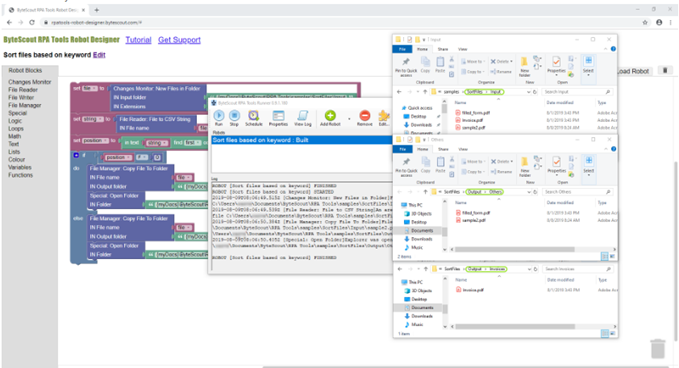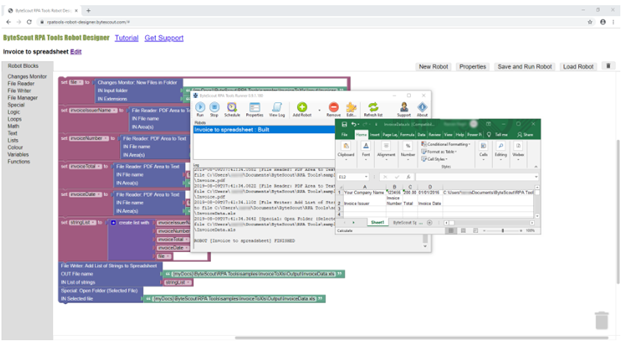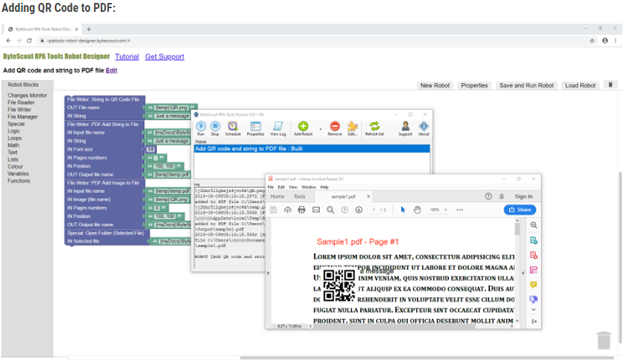RPA has gained a significant position in the sustainability of many major corporations.
Establishing a virtual workforce is a major priority for several companies throughout the globe. This is helpful in the transformation of operations by automating functions like data entry, administrative processes, and more.
It is not surprising to agree with the research that posited the market value of Robotic Process Automation to surpass $7billion by 2024, as highlighted in our article, “RPA IN THE FUTURE: ROBOTIC PROCESS AUTOMATION INNOVATIONS IN 2020“.

Analytical robots simplify the streamlining of business processes such as customer relationship management, support processes, and workflow structuring. They offer a detailed analysis of the client’s data, as well as automate solutions or channel them to appropriate units based on their discretions and insights.
RPA solutions have the capability of impacting and monitoring call center roles in the organization system. This is possible by separating the tasks as soon as possible and attending to questions on time.
Make Your Robots – Try RPA Tools
No other task has been as difficult and time-consuming as reporting over the years. With RPA, organizations can identify parameters connected to each report for the RPA framework to collate the required data and generate a report in record time. Managers can channel their energy and focus on high-engaging functions that promote organizational productivity, instead of the manual and the recurring jobs.
Synchronizing RPA with the ERP framework will enable enterprises to automate data analytics, giving room for the full automation of the ‘copy and paste’ process. Consequently, robots can perform data analysis, process the outcomes utilizing specific parameters, and make available a synopsis to the relevant departments in an organized approach.
RPA technology provides a lot of growth avenues for organizations by restricting the allocation of human resources to recurring tasks. They will help in thinning down resource wastage and provide intelligent enterprise approaches to attain optimal efficiency. Analytics and Reporting are crucial aspects that are very easy for RPA to simplify.
The invoicing procedure incorporates the management of invoices from the point of arrival to the time of payment. Invoices are in different variations and types. PO-based or purchased order invoices relate to an organization’s internal order, while non-PO invoices are not connected to any request.
Several enterprises have customized ways of processing invoices. The usual practices are to devise approaches for both purchase-order based and non-PO invoices. Generally, the responsibility lies with the account payable unit of the company to process invoices. The process of validating a vendor is called the ‘purchase-to-pay cycle.’
It usually starts with the reception of a vendor’s invoice. The invoice can come in through postal mail, email, EDI, or fax.
As soon as it arrives, the clerk at the account payable department must validate the invoice. He or she then classifies and organizes the invoices into different categories( by transaction type, by the vendor, or by department).
After the sorting and classification process, the clerk passes them to the AP processor who takes the oversight on each invoice. This is usually the individual who placed the order. The invoice will be checked with the purchase request to ascertain if the amount is correctly stipulated on the invoice. This guides against fraud and unauthenticated transactions.
If the sum is valid and the products have arrived, the person in charge will authenticate the invoice by appending on it. In case it exceeds an amount capped by the enterprise, a superior will have to approve it. This varies from company to company.
As soon as the invoice has been validated and approved, the accounting system works on it, then creates a voucher and subsequently effects payment. A manual process may exceed at least 15 stages before it is finally posted. This is rigorous and uncalled for.
Do you want to save time, as well as money, by creating your free invoice processing robots? ByteScout has all you need to make that happen.
You don’t have to code. You only connect blocks utilizing visual editor or make use of the pre-built templates.
You have at your disposal built-in blocks such as a text extractor, text writer spreadsheet reader, invoice extractor, barcode reader and generator, pdf splitter and merger, changes detector, and several others.
The most exciting part is that it works for offline processing of invoices on your PC.
The pre-built templates are ready to be customized for your requirements.
You can download the FREE Community Edition build here. It gives you access to run up to 5 invoice processing robots of any size.

Sorting, as well as archiving invoices manually, could be tedious, slow, and prone to error. This can cause a delay in time and also affect your bottom lines. The ByteScout RPA tool prevents these hurdles. You can enhance the handling of invoices and free up time for other essential tasks.
You can load original invoices, parse them and add them into your CSV spreadsheet.

With the ByteScout Invoice Parser, you can automatically and easily extract data from your invoices. The parser can assist you in processing documents and multiple tables in a PDF file. The formats of the outputs are in JSON, XML, YAML, and CSV. It also includes enhanced OCR picture preprocessing filters. It works offline and comes in rich documentation with guides and tutorials. You can read more here on how to download your free trial. You can also review some free online courses from Bytescout Academy.

QR(Quick Response) codes are crucial for your documents because of its versatility. Their benefits affect both you and your clients positively. For instance, you can save advertising expenses and costs by sharing a QR code on your website. Your client can quickly scan the code to store data for future reference. Another benefit is that they connect diverse forms of marketing channels. For instance, mobile commerce and eCommerce utilize QR codes. They act as links and connect clients to different service or solutions your organizations offer. ByteScout’s RPA tool enables you to add QR code to your PDF. This will make you gain exposure and generate revenue.
The RPA Robot Designer tool can only work on PC. It requires no code and easy-to-use.
The future certainly looks so bright for this technology; enterprises can boost their compliance success, which affects their corporate decision making. RPA solutions will establish a balance in the operational workload.
Robots can offer real-time insights and organization-wide implementation. They can drastically perform better than conventional processes.
For optimal maximization of RPA at the corporate level, the human employees must collaborate effectively with the virtual workforce. Optimized accuracy and minimized processing time are achievable based on this compliance.
RPA will direct the analytics, as well as the reporting activities to completion within a given period, and improve productivity by aiding tasks such as claims management, transaction processing, and query resolution, which are relevant to enhance productivity at the corporate level.